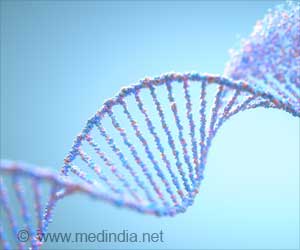Highlights
- Cadherin-22 may play an important role in cancer cell adhesion and spread
- Under low oxygen conditions certain cancer cells can initiate cadherin-22 production, this protein can help bind cancer cells together, enhancing cellular movement, invasion and likely metastasis
- More hypoxic (low oxygen condition) a tumor was, the more cadherin-22 was found in the area of the hypoxia
- Cadherin-22 could be a powerful prognostic marker for advanced cancer stages and patient outcomes
Most solid cancer tumors that have outgrown their blood supply, and are therefore deprived of oxygen, are difficult to treat, and the cells within are capable of spreading rapidly and doing the most damage.
In over a hundred breast and brain cancer patient tumor specimens, researchers found that the more hypoxic the tumor was, the more cadherin-22 it had.
Until now, little was known about how oxygen-deprived cancer cells bound together and interacted to spread. The U of G researchers found that it is precisely under conditions of low oxygen that cancer cells trigger the production of cadherin-22, putting in motion a kind of protein boost that helps bind cells together, enhancing cellular movement, invasion, and likely metastasis.
Cadherin-22 is located on cell surfaces, allowing hypoxic cancer cells to stick together and migrate collectively as a group, said Uniacke.
Studying breast and brain cancer cells in a hypoxia incubator, Uniacke and his team discovered that cadherin-22 is involved in this process to enable the spread of cancer cells.
For both cancer types, the research team used molecular tools to reduce the amount of cadherin-22. They placed the human cancer cells into the incubator and lowered the oxygen to a level comparable to that in a tumor. The cells failed to spread.
"One very powerful and common tool in cell and molecular biology labs is, you can remove protein from a cell and see how that cell behaves without it," Uniacke said. "We culture our cancer cells in this very low-oxygen environment, and they start behaving like they are inside a low-oxygen tumor."
The findings offer vital insights into how tumor cells could become aggressive and spread to other parts of the body.
"Because a cancer tumor has a poor blood supply, it doesn't get the proper oxygen," Uniacke said. "The cancerous cells need to change their behavior, changing what proteins they synthesize to try to adapt to these environments."
Higher levels of hypoxia in a tumor are strongly linked to poor survival rates in cancer patients, he said, and hypoxic tumors are often resistant to treatment.
Reference
- N J Kelly, J F A Varga, E J Specker, C M Romeo, B L Coomber & J Uniacke. Hypoxia activates cadherin-22 synthesis via eIF4E2 to drive cancer cell migration, invasion and adhesion, Oncogene (2017). DOI:10.1038/onc.2017.372
Source-Eurekalert












